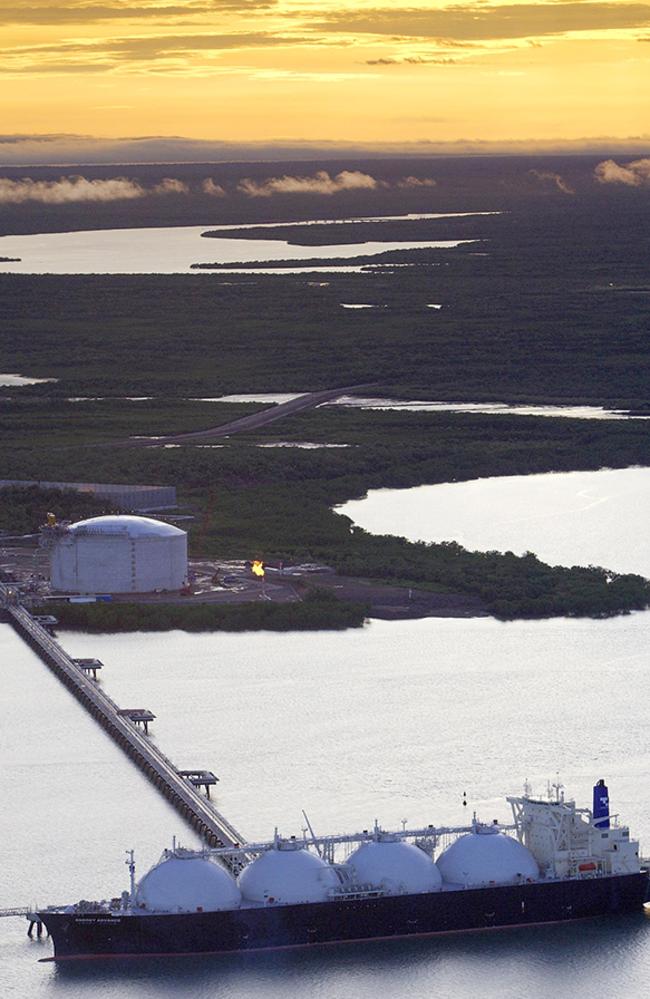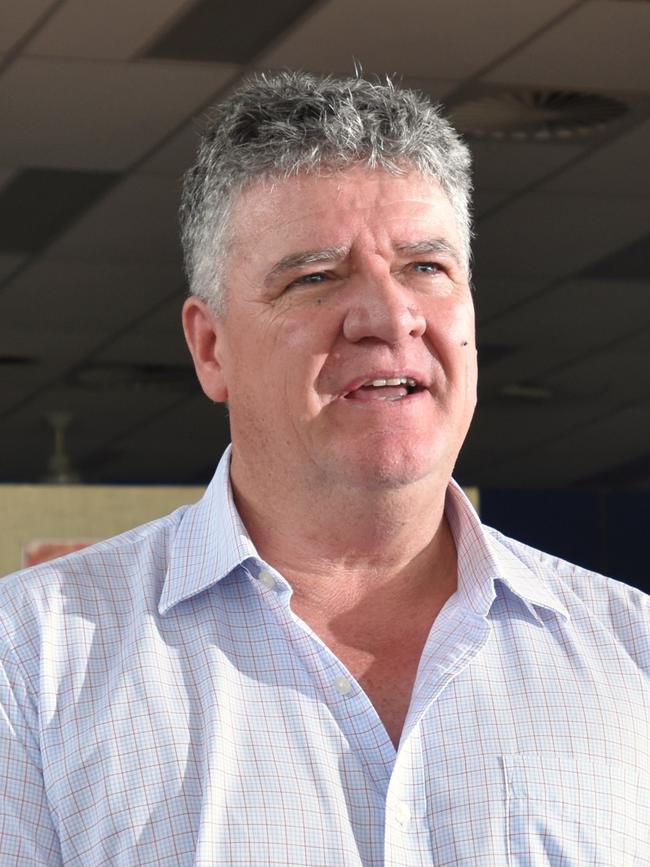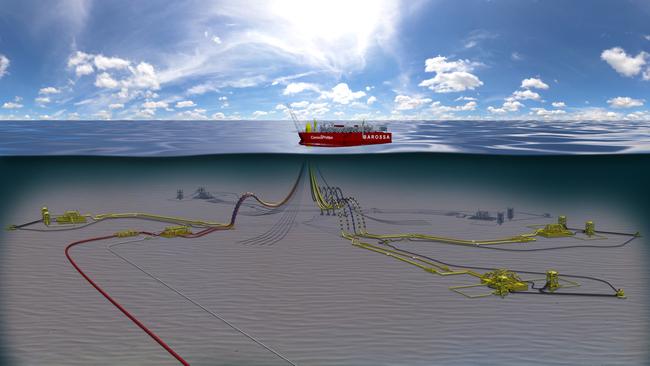Barossa Gas Project: Santos wins NT EPA approval for 100km stretch of pipeline
Fresh after emerging victorious from a challenge by a group of Tiwi Islanders to its proposed pipeline connecting the Barossa offshore gas field to Darwin, Santos has chalked up another win.

Business
Don't miss out on the headlines from Business. Followed categories will be added to My News.
Fresh after emerging victorious from a challenge by a group of Tiwi Islanders to its proposed pipeline connecting the Barossa offshore gas field to Darwin, energy giant Santos has gotten the green light from the Northern Territory Government for a new section of pipeline in its waters.
On Friday, Environment Minister Kate Worden announced she had accepted the recommendation of the NT Environment Protection Authority (EPA) to approve the approximately 100km stretch of Santos’ Darwin Pipeline Duplication (DPD) project, with conditions.
The DPD forms a part of Santos’ Barossa Gas Export Pipeline project, which was recently subject to a high-profile, and unsuccessful, federal court challenge by a group of Tiwi Islanders, to bring gas from the undeveloped Barossa reservoir, in the Timor Sea, to Darwin.

The DPD duplicates a section of the existing Bayu-Undan pipeline, which is proposed to stay in place to provide Santos with the option of repurposing it to transport carbon dioxide (CO2) to the depleted Bayu-Undan reservoir for sequestration (storing carbon to prevent emissions).
Santos believes up to 10 million tonnes of CO2 per annum could be stored in the depleted Bayu-Undan field.
Ms Worden said the DPD had been through a “rigorous environmental assessment by the NT EPA”.
“The Territory Government has supported this project from the beginning,” she said.
“Gas will play a critical role in supporting our transition to renewables, ensuring ongoing energy security for Territorians as we head towards net zero.”
Mining Minister Mark Monaghan was similarly effusive, saying unlocking Barossa, 285km northwest of Darwin, would position the Territory as a “global leader in low-emissions energy exports”.

“The … project is significant for the Territory’s economy and secures hundreds of local jobs for the next two decades, all while being pivotal in the world’s transition to a cleaner, greener future,” he said.
That claim is bitterly contested by those opposed to developing Barossa.
Progressive think tank, The Australia Institute, claims Barossa will “produce 1.4 tonnes of CO2-equivalent (CO2e) per tonne of liquefied natural gas (LNG) produced, triple the level of peer projects”.
Barossa is expected to produce 276,003 kilotonnes of CO2e emissions over its lifespan, according to the NT EPAs assessment report.
This amount is “large and considered to be significant,” the report said.
The NT EPA imposed dozens of conditions on the project.

There must be no more than 500,000 cubic metres of material to be dredged to facilitate the 100km section, and spoil must only be disposed in a 625ha area outside of Darwin Harbour.
A cultural heritage management plan must be prepared in consultation with the Northern and Tiwi Land Councils.
Other plans required for submission include a marine megafauna noise management plan, onshore and offshore construction environmental management plans, and a trenching management plan.
Within six months of completion, an independent report must be submitted on the pipeline’s environmental performance and compliance with the NT EPAs conditions.
The government claims the Barossa project will be worth $6.4bn to the Territory economy over its lifespan.
The DPD requires additional Commonwealth approval before progressing further.





